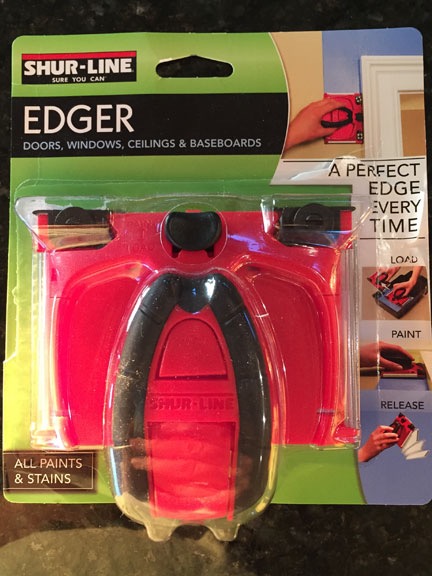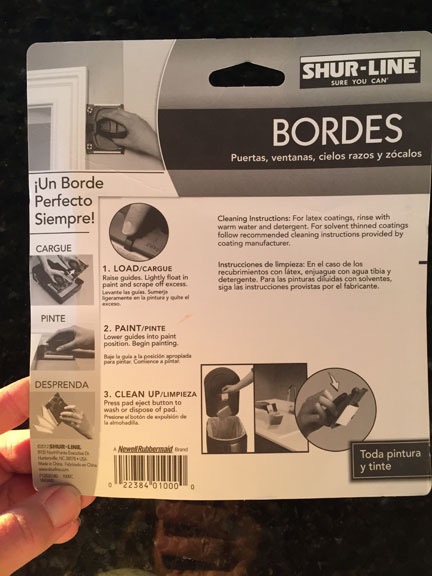Because crickets belong outdoors.
It started the other night at 1:50 AM. The sound of a cricket so loud that it woke me out of a sound sleep.
Like most people, I like the sound of crickets. To me, it’s a country sound, a sound of the natural world. It reminds me of childhood and camping and the great outdoors. It reminds me of star gazing and warm summer nights and forests.
A symphony of hundreds of crickets is a wonderful blanket of white noise to lull a person to sleep.
But not when a cricket is making its noise from the inside of your bedroom closet.
It was loud. Very loud. And because my home has very high ceilings, the sound seemed to echo around the place. Indeed, when I finally got out of bed to try to put a stop to it, it took me a while to zero in on the bug’s location. But I found it in the corner of the closet, hidden under some temporary shelves I’d put in there to stow my clothes until my official move.
This was not a small cricket like the ones you might buy in a pet shop to feed your caged reptile. Its body was at least an inch long.
A shoe made short work of it. I picked up its carcass with a tissue and flushed it.
And then I went back to bed.
I never did get back to sleep. Another cricket started up soon afterwards. This one wasn’t in the closet. I had no idea where it was but I knew it was indoors. Somewhere. Possibly in the living room.
I got out of bed to start by day. At 3:15 AM.
That night, on Facebook, I mentioned my cricket situation:
Found and killed the cricket in my bedroom, but the one in the living room is still at large. For now.
One of my friends commented:
Oh no! I’m sad to hear that, I love me my crickets! All they do is make music for you!
My response:
I suspect you haven’t had them in your bedroom with you. At night. When you want to sleep.
My friend Alix, who is in a doctoral program for entomology, said she could use one for her collection. She’s required to collect, identify, and mount several hundred insects for her degree. I’ve been collecting interesting bugs on and off for her for the past two years. I even bought special zipper snack bags to store them in.
So the next morning, when the cricket somewhere near my hallway started up again before 4 AM, I grabbed a snack bag and went hunting. The trick, I realized, is to be very quiet. If they hear you nearby, they shut up. It took about 10 minutes, but I finally zeroed in on my second victim. It was in my future linen closet — currently shelfless — against one wall. I put the baggie down in front of it and coaxed it in. Then I zipped it shut, took a photo, put it in the freezer, and showed it off on the Facebook thread.

Alix later identified it as a male Gryllidae. (She is seriously into bugs.)
Later that morning, I heard a third one. I found it in my bedroom closet again. The ShopVac I had sitting in the hallway made short work of it.
That night, it was quiet inside. In fact, it was quiet for the next few nights.
Until 3:30 AM on Monday morning.
I found it in my closet, conveniently close to my household vacuum and closet power outlet. I plugged in the vacuum, positioned the hose nozzle, and turned it on. Whoosh!
After a quick tweet, I went back to sleep.
Since then, I haven’t been bothered by indoor crickets at night.
I did find one by my bedroom door to the deck yesterday afternoon when I went outside with a glass of wine to watch a rainstorm and listen to the rain on my roof. I scooted it outside with my toe.
And I’m pretty sure there’s one stuck inside the wall or possibly between the wall and door jamb downstairs in my entrance vestibule. I can’t find it and it doesn’t make noise at night. As I type this, it’s silent and I’m beginning to think it either found its way outside or has died.
Is the Cricket War over? I doubt it. I am more careful about leaving the doors open downstairs, though. I know I have crickets in my garage and I don’t really mind. But since I suspect they might have come in through one of my two vestibule doors to get upstairs, I now keep those doors closed. And the front door.
But I know who the winner of this war will be — and it isn’t the crickets.

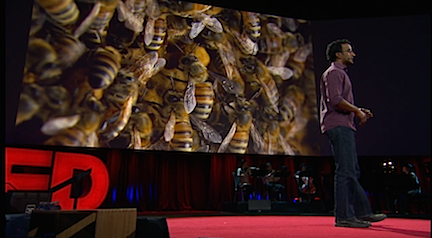
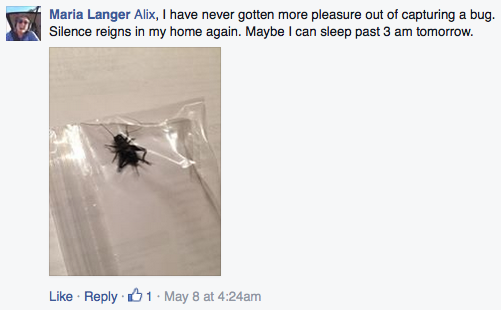
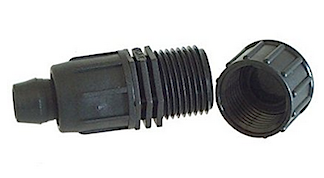
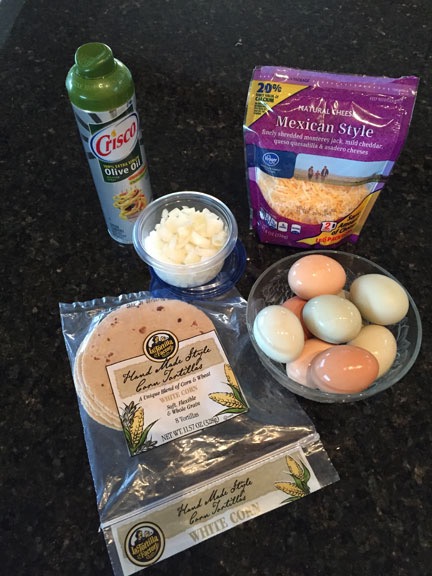 Small amount of oil or cooking spray. I usually use olive oil spray to keep the fat down a bit.
Small amount of oil or cooking spray. I usually use olive oil spray to keep the fat down a bit. Gather the onions or scallions into the middle of the pan and drop an egg on them. You might want to use this opportunity to break the yolk so it cooks. I don’t scramble my eggs before cooking, but you could if you want to. Just make sure the egg stays together in the middle of the pan so it doesn’t get larger than the tortilla.
Gather the onions or scallions into the middle of the pan and drop an egg on them. You might want to use this opportunity to break the yolk so it cooks. I don’t scramble my eggs before cooking, but you could if you want to. Just make sure the egg stays together in the middle of the pan so it doesn’t get larger than the tortilla.